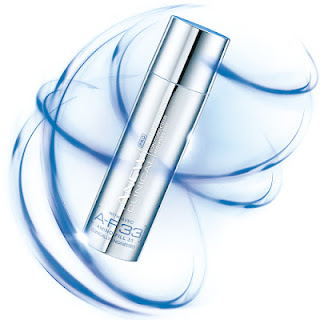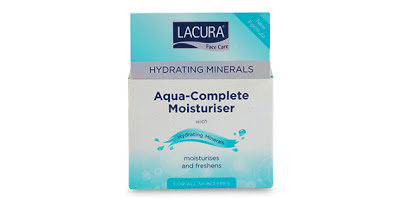Why leaving the heating off and avoiding the gym could help you lose weight

Five years ago brown fat was 'rediscovered' in adults
By plunging my hand into a bucket of cold tap water, I am about to find out how effective my body is at burning calories.
What seems a rudimentary experiment is, in fact, the basis of a groundbreaking study into the effects of brown — or ‘good’ — fat.
We’re all born with brown fat around our shoulder blades: it plays an important role in maintaining our body temperature as babies, by burning up calories and fat reserves to keep us warm.
Unfortunately, scientists have long thought that brown fat disappears in infancy once its physiological uses have been exhausted.
Then five years ago, brown fat was ‘rediscovered’ in adults, when researchers carrying out scans on adult patients in the winter months noticed areas of fat that seemed to be turned on by the cold weather.
Their scans detected a few ounces of brown fat in the upper back, on the side of the neck, in the dip between the collarbone and the shoulder, and along the spine.
Since then, brown fat has become a rapidly growing area of interest among researchers who believe it could hold a vital key to weight problems.
Within just five years their understanding of it has advanced significantly.
It’s now thought, for instance, that not just the cold, but certain foods can activate it. So, too, can exercise.
So what is brown fat?
Unlike the more familiar, yellowish-white body fat you pile on if you eat too many calories, brown fat — apparently the colour of chocolate — does the opposite, burning excess energy to generate heat and maintain the body’s core temperature.
When ‘switched on’ it is said to produce around 300 times more heat than any other organ in the body.
Because of their higher total body fat, women are known to have proportionately more brown fat than men and it is more detectable in lean people than obese (researchers think this could be because excess white fat stifles the effects of brown fat, or the obese become overweight because their brown fat is inefficient anyway).
There is little doubt about the excitement being generated by the discovery of brown fat.
As one of the lead researchers, Professor Michael Symonds, says: ‘We are on the threshold of what could prove really significant advances in obesity research.’
And what’s so intriguing is that possible treatments could be extremely low-tech.
It’s now established that exposure to cold spurs brown fat into action in some people — could this simple principle be used to tackle obesity?
To answer this, scientists at the University of Nottingham’s Queen’s Medical Centre are using thermal imaging techniques — and a bucket of cold water — to assess changes in brown fat in adult recruits, and see how it affects their weight.

To activate your brown fat: Turn the heating off or down in the car, the office and at home
Professor Symonds, who is leading the study, has agreed to let me see the research for myself, and I’m going to have my own levels of brown fat measured — and tested to see if it’s working.
Before my brown fat can be assessed, Dr Lindsay Elvidge, a children’s doctor who is helping Professor Symonds, measures the thickness of the skin at the top of my shoulders using ultrasound — some studies have shown the thicker the skin here, the less active the brown fat beneath.
My skin thickness is average.
The temperature of my brown fat is then measured using a thermal scan. I’m asked to sit in a comfortable position for ten minutes (without moving to ensure my temperature fluctuates as little as possible) before placing my hand in the bucket of water.
At 20c, it is chilly but not freezing. After five minutes of submersion, my hand is turning numb — I can feel it and Dr Elvidge says it’s also being picked up by the thermal imaging camera hidden behind a screen, which is showing my hand as a startling blue.
She says the cameras are displaying a distinct increase in red areas around my lower neck — a sign that my brown fat stores are reacting in the way they should, producing heat and burning calories to keep me warm.
Is my brown fat reaction what they would expect?
Yes, says Professor Symonds, adding that in the overweight the patterns are different.
‘We are finding that the brown fat in overweight or obese children and adults is not activated in the same way,’ he says.
‘The million dollar question is why this happens. Nobody knows whether it is just less active, or if there is less of it.’
In a study published in the Journal of Pediatrics in June, Professor Symonds used thermal imaging to show the neck region in healthy children produces heat.
‘There is only about 50g of brown fat in the neck region of children and it switches on and off throughout the day as it’s exposed to different temperatures or if you exercise or eat,’ he says.
But this effect is less well-defined in adolescents and adults.
‘We do know that you have less brown fat as you get older and that ties in with the other metabolic changes that occur with age,’ says Professor Symonds.
‘We also think there might be subtle changes in brown fat that occur around puberty.’
What he and his team hope to find in their current trial is whether factors such as cool temperatures can be used to manipulate brown fat action, thereby preventing excess weight gain.
‘The more we know about how it works and what switches it on, the better,’ he says. ‘Certain foods, including milk, seem to have a positive thermogenic, or warming effect, on brown fat that triggers it into action.’
In theory, consuming cold, slush puppy-type drinks may be useful, particularly when combined with exercise, he explains.
Equally, hot drinks and a high consumption of high-fat foods are probably not great brown fat triggers.
Several studies, including one at the Wellcome Trust Clinical Research Facility at Addenbrooke’s Hospital, Cambridge, have proposed that eating chilli peppers might help — they contain a compound, capsaicin, which seems to trick the brain into thinking it is cold, coaxing brown fat into burning a few more calories than normal.
With diet the next area to be studied in this emerging field of science, we could one day see the benefit on supermarket shelves.
‘We could add a heat index to food labels to show whether that product would increase or decrease heat production within brown fat,’ says Professor Symonds.
‘We could inform people whether the foods they select would speed up or slow down the number of calories they burn.’
There is also the potential for the development of drugs that prompt brown fat into action.

Avoid the gym. Take a walk, go for a cycle or just skip outdoors on a cold day
Already, some scientists are investigating ways in which stubborn white fat could be given some of the beneficial characteristics of energy-burning brown fat.
In one study, published in the journal Cell in August, researchers at Columbia University medical school managed to ‘brown’ white fat with the use of a class of drugs called thiazolidinediones (TZDs), sometimes used to lower blood sugar in type 2 diabetes.
‘Turning white fat into brown fat is an appealing therapeutic approach to staunching the obesity epidemic,’ says lead researcher Professor Domenico Accili. ‘But so far it has been difficult to do so in a safe and effective way.’
This is because these drugs are linked to risky side-effects including liver toxicity and bone loss.
However, Professor Accili concluded ‘TZDs may not be so bad — if you can find a way to tweak their activity’ and they may help to prevent both type 2 diabetes and heart disease in addition to weight problems.
A simpler way to convert white fat into a calorie-burning form of fat could be through exercise. In the flurry of research into the area, scientists have discovered another type of brown fat — initially they spotted it in mice, but now they’ve found it in humans.
Dubbed ‘beige fat’ because of its lighter colour, it is often interspersed in the white fat, and occurs in pea-size deposits rather than in large masses.
Writing in the journal Nature earlier this year, Bruce Spiegelman, a professor of cell biology and medicine at the Dana-Farber Cancer Institute in the U.S., revealed that in mice studies, exercise appears to temporarily turn white fat into beige fat — this burns calories, although not as effectively as brown fat.
The mouse muscle cells released a newly discovered hormone, irisin, that enabled their bodies to make beige fat from white.
As humans also have irisin that’s identical to mouse irisin, the same could be true in people who exercise.
‘What I would guess is that this is likely to be the explanation for some of the weight-loss effects of exercise,’ Professor Spiegelman says.
In other words, beige fat could be partly responsible for the so-called ‘after-burn’ of calories following a workout.
There is something I am keen to ask him. Every winter I lose half a stone in weight without trying and despite my activity levels and diet remaining unchanged. I literally feel myself ‘shrinking’ when the first cold snap of autumn arrives.
And, like many women, I suffer from Raynaud’s, the circulatory problem that leaves my fingers numb and invariably means I am constantly shifting about to try to stay warm.
Could all of this be sending my brown fat levels into overdrive?
Yes, he says, and is probably the reason my weight has remained stable within half a stone for the past eight years.
The fact I’ve done all my exercise — I run five or six times a week — outdoors, come rain or shine, has also helped to keep my brown fat activated.
And I can see the results myself from his test — the temperature of my brown fat rose 0.15c from its baseline of 34.5c.
It doesn’t sound much, but represents a rapid increase in just five minutes of cold exposure, equating to a 10-15 per cent rise in the number of calories I burn.
The Nottingham study, which will involve 20 adults, will look at the influence of weight, body mass index, food consumption and activity levels on brown fat.
As the results come out in the next couple of years, they could change the way we think about calorie burning.
And if we can activate our brown fat, it could even mean we could eat more without gaining weight.
As Professor Symonds points out: ‘It would turn us into more efficient calorie-gobbling machines.’
HOW TO ACTIVATE YOUR BROWN FAT
- Turn the heating off or down in the car, the office and at home. If you are walking round in a T-shirt in mid-winter, your environment is too warm. ‘Our modern lifestyles are not conducive to brown fat activation,’ says Professor Symonds.
‘Thirty years ago, our houses and offices were not centrally heated. We had maybe one room in a house that was really warm. Many studies have noted a seasonal variation with more brown fat activation in winter months — so the more cold we are exposed to, the better.’
So turn down the heating and put on a jumper if you feel really cold. ‘We need to feel the cold to burn calories,’ he says.
- Add chilli peppers to food — the active ingredient capsaicin has been shown to trigger brown fat into action.
- Avoid the gym. Take a walk, go for a cycle or just skip outdoors on a cold day. If you are really brave, an outdoor swim is guaranteed to get brown fat working. Outdoor exercise of any kind is beneficial.
- Consume dairy products — yoghurt, milk and cheese are thought to be important in activating brown fat. Steer clear of high-fat, sugary carbohydrates and highly processed foods. It is likely they have an adverse impact on brown fat.
- Drink cold water or ice-cold juice. Some studies have shown that cold drinks help to keep the body’s core temperature lower during exercise — the effects might also trigger brown fat into action.







